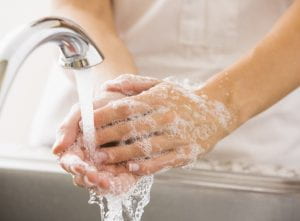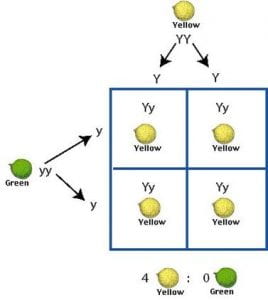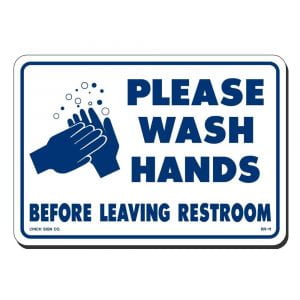3/22 coronavirus (Covid-19) again
The coronavirus has taken over our lives. People are hoarding important things like masks, T.P., and sanitizer. Some people are over-reacting, and some are just ignoring it. We have to stay at home, and leave only if necessary. We should keep 6 feet away from people and take proper precautions. We have to be careful, but we do not need to over-react. The coronavirus is spreading, but we can slow it down. When we do these things such as: washing our hands frequently, staying at home, staying away from people, not touching our faces, not hoarding, and coughing into our elbows, we can slow the spread. Washing our hands is super important because soap is one of Covid-19’s main enemies.


The reason soap is so important is because it literally pulls apart viruses. Let me explain: viruses are just things with a fatty layer surrounding them. Its only purpose is to copy itself. When you rinse off your hands with just water, it doesn’t clean them. The fatty shell protects the virus, and it just stays on your hand, no harm done to it. When you use soap, though, it pulls apart the virus. Soap has protein things in it that are attracted to water on one side, and fat on the other side. When the fat attracted side sticks into the virus, the water attracted side pulls towards the wate, ripping the virus apart. When you rinse your hands after, the once-deadly now helpless virus shards go down the drain. It takes time, though. So wash your hands for 20-30 seconds! Yes, you heard me, 20-30 seconds! Do you really want to get sick? And do you really want to get others sick? No? Then wash your hands!
Will school close for the rest of the school year?
Will school be closed for yet another week after this morning’s anouncment of a fourth?
When will we bounce back to normal?
2/15 Coronavirus (Covid-19)
The coronavirus (Covid-19) has swept across America quickly. The only state that doesn’t have it is West Virginia. Covid-19 is causing a toll on our economy. Things like toilet paper, alcohol, canned foods, and hand sanitizer have vanished. Schools are shutting, offices are telling their employees to work from home, and trips are being canceled. It seems like some pretty rough times, but there are ways to stay safe, healthy, and encourage others to do so as well.

One of the most important things is washing your hands. When washing: remember to scrub your fingernails in the palms of your hands, twist your thumbs in your fists, get in between your fingers, and lather the backs of your hands and wrists. Make sure to use bar soap if available and hum the happy birthday song twice (20-30 seconds), medium-slow. Only use hand sanitizer if soap and water are not available, and make sure it is at least 60% alcohol. Don’t shake peoples hands, high-five or hug people, a good alternative is fist bumps and/or hand guns. Cover your sneezes/coughs with your elbow and wash your hands after blowing your nose. Before and after eating you should also wash your hands. Don’t go places or touch things if you don’t absolutely need to. With the coronavirus spreading, we need to be on our feet, stay level headed and aware, and teach others how to wash their hands and avoid getting sick.
When will the coronavirus fade?
When will it be in Traverse City?
Is the coronavirus already here?
3/8 room for dessert
Have you ever wondered how people can always “make room for dessert?” Or why people might say their full even when they aren’t? Sometimes you might think you’re full, but when handed a plate of desert, you can eat it all. That is because of Sensory Specific Satiety (sah-tie-eh-tee). It is how we often mistake ourselves for feeling full. Basically after eating the same food for a while, your brain gets bored, and so you think you’re full. You might be interested in eating something, but after having a bunch of it, eh… not so much.

So, after “finishing” a meal, when you are offered dessert, it is something different than what you had just been eating. It is something “new” and “exciting,” so of course you have room to eat it. The people at Vox did a test where they fed some people mac and cheese. Before they fed them, they asked them how excited they were about eating mac and cheese. After they ate it, they asked them again. The people’s interests in mack and cheese had gone down. So, if your brain gets uninterested in the food you’re eating, you might just think you’re full.
What if it is your favorite food?
What about when people have a multi-coursed meal?
What if they eat their dessert first?
3/1 Science Expo Experiment
Every year at my school, we do a Science Expo. This year my classmates and I had to create solo experiments. I decided to ask the question: “what is the best way to wash your hands?” My hypothesis was: Adults washing their hands for 30 seconds with bar soap will have the best results. I started by getting some petri dishes from amazon and designing my experiment. For my experiment I had my family rub their hands in my kitchen sink. When they were done, I had them wash their hands for 10 or 30 seconds, with liquid or bar soap. I then used steralized qutips to swab their hands.

Then I rubbed the swabbed qutips in my petri dishes. I also swabbed my kitchen sink for my control. I took pictures of the bacteria growth in my petri dishes every day. I did some reseach on whether bar or liquid soap was better. According to my research, liquid soap is more expensive and worse for the environment. Bar soap is more environmentally-friendly and is 3x cheaper than liquid soap. The conclusion for my experiment is: kids wash their hands better than adults with bar soap for 30 seconds. I suggest you wash your hands for 20-30 second with bar soap.
What is the best soap company?
What soap is best for people with ecxema?
What is the best temp. of water to use?
2/9 Gregor Mendel’s Pea Plants
Last week in science we learned about genetics. In class we learned about a guy named Gregor Mendel who had the hypothesis that traits were not randomly given to a newborn, but passed on by the parents. He tested his hypothesis on pea plants. He carefully bred pea plants with simple differences like height, flower color, pod color, and pea appearance. When he bred a tall pea plant with a short one, the offspring were all tall. They were tall because the gene that made them tall was dominant to the gene that would make them short. When he bred two of these pea plants together, he got mostly tall pea plants, and a few short.

The reason that some were tall and some were short was because the offspring of the tall and short pea plants had a different genetic code than a normal tall pea plant. For example: the genetic code of a tall pea plant is ‘PP,’ and the genetic code of a short pea plant is ‘pp.’ When you breed PP with pp, the offspring will have the genetic code: Pp. The gene P is dominant to the gene p, so the offspring are tall. When you breed those tall plants together you will get the genetic codes: PP, Pp, Pp, pp. So, out of four plants, one would be short and the rest would be tall. Two of the tall ones would carry the short gene with them, though.
Why did he pick pea plants?
When did he first hypothesize this?
When was the Punnett square invented?
2/2 Wild House Cats
For science class we are beginning to learn about genetics. I watched a video about how people are using genetics to modify cats to look like their wild cousins. There is a guy named Anthony Hutcherson who breeds Bengal cats. He said that he had always wanted to have a pet leopard, so he decided to breed domestic cats to look like one. He began when he met this lady named Jean Mill. She told him of the Asian Leopard cat which was bred with a domestic cat to make a F1 (first generation) bengal hybrid, which she had. She then bred her F1 with a domestic cat to make a Bengal hybrid.

She then proceeded to breed the males of the offspring with domestic cats until she got four generations away from the Asian Leopard cat, meaning that now the Bengal was an official breed. Now Anthony uses selective breeding to make the Bengal cats look more and more like leopards. There is also a woman who breeds Toygers (toy tigers), her name is Judy Sugden. The problem with her breeding is; you can’t breed a tiger with a domestic cat. So she has been using only selective breeding of domestic cats to create a tiny-tiger lookalike.
Has anyone tried to make a giant house cat?
What breeds did Judy select to make the Toyger?
What is the most wild cat breed?
1/12/20 Renaissance!
For two weeks (one before and one after winter break) the classes 5th-8th at my school did a multi-age Renaissance unit. It was really fun. We got to build models, paint, make posters, write, and sing/dance. I learned that the Renaissance lasted from around 1400-1600, and that a lot of our famous painters, sculptors, writers, etc. came from that time period. I mostly learned about Joan of Arc, Catherine de Medici, and Filippo Lippi. Joan of Arc was born a peasant girl, lead an army as a teenager, and was burned at the stake when she was only 19. Catherine de Medici was a queen who hated Protestants, and had 7 children. Filippo Lippi was an Italian painter who taught Botticelli.

I had a lot of fun learning about these people; I got to paint Joan of Arc, create a poster of Filippo Lippi, and impersonate Catherine de Medici. In math class I got to build a castle with my friends. In LASS I got to paint/write. In music I got to dance to a renaissance song. In Science I got to build models of Leonardo da Vinci’s tank, and make a wanted poster. In French I got to impersonate Catherine de Medici. I can’t wait for the Renaissance fair!
Who were Joan of Arc’s parents?
Why did his parents name him Filippo Lippi?
What will we do for next year’s multi-age unit?
12/15 Skin
Did you know that your skin is just one big organ? Did you know that the thinnest point of your skin is your eyelids, and the thickest point is the bottom of your feet? And did you know that your skin is 16% of your body weight? Skin is incredible because of all the amazing things it does, and so that is what my blog is about today. Skin is the foundation of the integumentary system, which includes your nails and hair. If you stretched out all of your skin flat, it would be around 1.7 meters squared! Your skin is made up of three layers: the epidermis, dermis, and hypodermis.

For your sense of touch/feel skin relies on pressure sensitive merkel cells. In each square centimeter in your finger there are 750 merkel cells and around 2,500 receptors! Your skin protects you from unwanted bacteria and uses collagen to absorb shock. The epidermis is made up of keratinocytes, skin cells. Your skin is completely replaced every 4 weeks! The veins in your skin expand to release heat when you are hot, and contract to conserve heat when you are cold. When you are cold, muscles called arrector pili flex and straiten the hairs on your skin, which causes the skin around your hairs to bulge, hence the saying ‘goosebumps.’
In total, how many skin cells are on my body at any given time?
How many hairs are on my body?
How often do the hairs on my body fall off, and how many?
Source:
12/8 Virus and Bacteria
This week in science we worked on our bacteria and virus projects. We simulated bacteria killing processes to find out which was the best. To do this we used this kind of powder (which simulates bacteria) that only shows up with a black light, and mixed that with lotion. We then tested whether washing your hands worked better than using hand sanitizer and whether cold water worked better than warm etc.. We timed ourselves and measured the amounts of soap/sanitizer used. I learned that using hot water and using soap works better than using cold/sanitizer. I also learned that you can never be too careful when washing your hands.

We also worked on our petri dish projects. We got in groups of three our four, then planned out what was to be swabbed and by who. Then we went home and boiled water to dip our cutips in (so that we could sterilize them). After that I swabbed my dog’s teeth, my shower floor, the bottom of my kitchen sink, and one of my plates. For our virus projects we had to make a wanted dead poster and a slideshow. We had to learn about a virus and pretend that we are that virus. Then we had to brag or whine about our job in the slideshow.
Why doesn’t sanitizer work as well as soap?
What is the dirtiest place in my house?
How many years did smallpox exist?